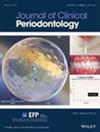Emerging Technologies and Algorithms for Periodontal Screening and Risk of Disease Progression in Non-Dental Settings: A Scoping Review
Abstract
Aim
To evaluate different tools to screen for periodontal diseases and/or evaluate the risk for disease progression in non-dental clinical settings.
Materials and Methods
The PRISMA Extension for Scoping Reviews (PRISMA-ScR) guideline was followed. A systematic search was conducted on three databases. In order to provide a comprehensive picture of periodontal diseases (Population) screening and risk assessment tools (Concept) in non-dental settings (Context), the available information was identified and presented in terms of the sources of data/domains assessed and, eventually, how the tools/algorithms were validated. The risk of bias was assessed using the QUADAS-2 tool.
Results
A total of 5313 articles were identified for abstract screening. Finally, 102 were included for data synthesis. The included studies were classified into domains/clusters. Only two studies focused on risk assessment for disease progression. Algorithms designed to screen for gingivitis tended to present low sensitivity values, while the screening performance improved for periodontitis, particularly for severe periodontitis. Validated self-reported questionnaires plus socio-demographic determinants (e.g., age), certain biomarkers in saliva (e.g., activated matrix metalloproteinase-8, aMMP-8) and artificial intelligence (AI) algorithms based on orthopantomographs (OPGs) present the best screening capacity for periodontitis.
Conclusions
Screening for periodontitis in non-dental settings is feasible. Validated self-reported questionnaires remain the gold standard for screening severe periodontitis in non-dental settings, although AI algorithms based on biomarkers in saliva, or derived from OPGs, have shown promising results.

 求助内容:
求助内容: 应助结果提醒方式:
应助结果提醒方式:


